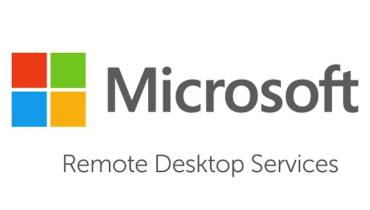Data Analytics: How to Use Data to Improve Business Outcomes

You may have heard the term "data analytics" tossed around, but what does it mean? While most people will say that data analytics is simply about crunching numbers, it is way more than that.
Data analytics is about understanding the story the data is telling you. What are the trends? What are the patterns? What do they mean for your business?
In this blog, we'll look closely at how you can use data analytics solutions to improve your business outcomes. But let's start with the basics first!
What Is Data Analytics?
Broadly speaking, data analytics is the process of extracting insights from data. But that said and done, what does it mean?
Well, in the simplest of terms, it means that you can use data analytics to answer questions like:
- What products are customers most likely to buy?
- What's the best way to market products and services?
- What's causing an eCommerce website to crash?
- How can a business reduce customer churn?
- And so on
The possibilities are endless, and the insights you can glean from data can help you make more informed business decisions.
The great thing about data analytics is that it's constantly evolving. As technology advances, so does the ability to mine data for insights.
So, if you're not already using data analytics in your business, now is the time to start.
The Different Types of Data Analytics Solutions
When looking to improve your business outcomes, it's essential to understand the different types of data analytics.
There are three main types of data analytics: descriptive, diagnostic, and predictive.
- Descriptive analytics is all about extracting insights from data, typically by summarizing it into tables and graphs. It helps to understand what has happened in the past so that decisions can be made about what to do in the future.
- Diagnostic analytics goes a step further and helps you understand why things happen. This type of data can be used to identify issues and problems and to find solutions.
- Predictive analytics is the third type of data analytics, and it's all about forecasting future outcomes. It can predict customer churn, product sales, and financial risks.
How Data Analytics Can Improve Business Outcomes
There are many different ways that data analytics can be used to improve business outcomes. Here are a few examples:
1. Optimize Marketing Efforts
Data analytics solutions can help businesses analyze consumer behavior to optimize marketing efforts. Using data analysis, marketers can identify trends and patterns in their target market and use this information to create effective advertising campaigns.
It can also help identify which customer segments are most likely to respond to a marketing campaign and improve conversion rates.
2. Identify New Opportunities
Businesses can use data analytics to identify correlations and trends in data that were not previously apparent. This can include identifying new markets to target, new products to offer, or new ways to improve efficiency.
For example, data analytics may reveal a high demand for a particular product or service in a certain area or that a specific process could be improved to increase efficiency.
3. Increase Customer Loyalty
Data analytics can help increase customer loyalty by providing insights into customer behavior. This can help businesses understand what customers like and don't like and what drives them to make purchases.
Additionally, businesses can use data analytics solutions to identify trends in customer behavior and adapt their marketing strategies accordingly.
4. Improve Efficiency and Reduce costs
Data analytics can help identify inefficiencies in business processes and suggest improvements. It can also help identify opportunities for cost savings, such as identifying opportunities for automation or areas where spending can be reduced without impacting performance.
Additionally, data analytics can help organizations make better decisions about where to allocate their resources, leading to cost savings.
5. Make Better Decisions
There are multiple ways that data analytics can improve decision-making:
- First is through data visualization. Data visualization takes large data sets and turns them into easily-digestible visuals. This can help decision-makers see patterns and trends that they may not have been able to see before.
- Second is through identifying correlations. For example, suppose you want to invest in a new product. In that case, data analytics can help you see a correlation between the amount of money you invest in the product and the ROI you can expect.
- Finally, data analytics can predict future trends. This can be especially helpful in industries like retail, where it is essential to know what products will be popular in the future.
6. Drive Product Innovation
Implementing data analytics can allow businesses to develop innovative new products and services. Through data analysis, a company can understand how its products are being used, what features are popular and not, and how customers interact with the product. This information can help a company to design better products, improve customer satisfaction, and increase sales.
7. Grow Revenue
Data analytics can help businesses identify which products are most popular with customers and which are selling the most. This information can help a company focus its marketing efforts on the most popular products with customers and sell more products.
Additionally, data analytics can help a company identify which customers are the most profitable and who are the most likely to purchase additional products. This information can help a company target its marketing efforts towards the most profitable and likely to purchase additional products.
Top Tips for Using Data Analytics in Your Business
To stay competitive and thrive, every business should adopt a data-first approach.
Data analytics can help businesses understand customers better, identify new market opportunities, and optimize their marketing efforts.
If you haven't started your data journey yet, here are some tips for getting the most out of data analytics:
1. Collect the correct data
Data is the currency of digital transformations. But you won't get the right insights if you don't have the right data. And without the right insights, you won't make the right decisions.
2. Build a team of data analysts
You need people who understand data analysis. These are the experts who can turn raw data into actionable insights.
Data analysts should understand analytics, machine learning, statistics, and programming.
3. Analyze the data correctly
Don't just look at the numbers—understand what they're telling you and what actions you need to take based on that information.
4. Start with basic metrics
Then, use those metrics to measure success. If you're not measuring success, then you're just guessing. This will help you determine what works and doesn't work for your business.
5. Be Honest About Your Results
Don't lie to yourself or others about your results. If you're honest about where you are now, you'll be better prepared to tackle the challenges ahead. Being transparent about your efforts builds trust and opens the door to growth.
Data Is Powering Everything in the 21st-Century
Data is undoubtedly becoming an increasingly important commodity today. Everything from our daily routines to our business is now reliant on data. As we continue to generate more and more data, it will become even more critical to have access to it and be able to use it effectively.
It's predicted that 80% of global GDP will come from data in the future. With the rise of artificial intelligence (AI) and machine learning, data is becoming more powerful and valuable.
Understanding how to leverage data to improve your marketing strategy is essential. You need the right strategy, tools, and skill-set to turn data into insights that fuel business growth and productivity.
In Conclusion
Businesses today are increasingly turning to data and data analytics to help them make better decisions, improve their competitiveness, and optimize their operations. However, given the many benefits that data can offer businesses, it's tempting to try to improve everything at once. But sometimes, focusing on just one area to improve before moving to the next yields better outcomes.
Even if you don't get any immediate outcomes from your data analytics, don't panic. Take a step back and evaluate your data and efforts over time to determine whether you're moving forward or falling behind. And if you fall behind, you can always partner with a professional data analytics solutions provider. They have the right expertise and experience to turn business data into gold.



![9 Tips for Managing Your Online Writing Projects Efficiently [node:titile]](/sites/default/files/styles/thumbnail_rectangle/public/open-book-laptop-online-writing-tips.jpeg?itok=iq4PIT7b)


















